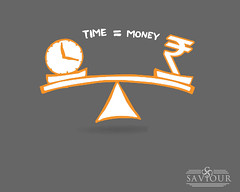Blog Archives
Vintage look for Spaces
Designers and homemakers are drawing inspiration from older styles to create show-stopping interiors.
The concept of design has changed dramatically. It no longer features a gaudy, in your-face style, obedient to the latest trend that ends up looking dated a few seasons later. Homeowners are no longer afraid to express their personal style and this has resulted in some amazing reincarnations of design ideas and concepts, many of which are comebacks from the past.
Furniture First:
Be it the living room, bedroom or study, it’s all about highlighting certain key pieces of furniture to centre the room and give it character. Nowadays, furniture-making has been elevated to an art form and is no longer looked upon as a simple exercise in carpentry. Furniture transcends mere functionality today. A chair isn’t merely an object you sit on but an intricate piece of your home that can set the mood, reflecting identity, emotions and lifestyle.
Four-poster:
The craze for an old fashioned four-poster bed, vintage dressing table or a pair of armchairs is back. Homemakers love the old-world charm and detailing of a four-poster bed that make a dramatic style statement, helping it create a visual centre in a room.
Dresser:
Another piece quickly gaining popularity is the old-fashioned dresser. A striking vanity or dressing table can be the style statement in any bedroom. Whether it is custom-built cabin entry or a small table in a nook that becomes a dressing area, there are plenty of attractive design options to choose from. Decorate your dresser with romantic overtones in the form of framed pictures, flowers or a box filled with personal effects.
Sofa:
Before you toss out an outdated, worn-out sofa or an old-fashioned writing desk in an attempt to add some style to your home, consider some simple do-it-yourself solutions. You could easily perk up your sofa by reupholstering it in a modern fabric with a bright red colour along with a contrasting trim of lime green.
Berry-colored stripes have become all the rage as well, and add a fresh, vibrant feel to any room. Strip the veneer or polish off your old writing table and go for a paint job in any bright colour from mustard yellow to lime green. Don’t forget to change those tarnished drawer knobs for a final finishing touch.
Bare Look:
A touch of raw wood is wowing the world of interior design these days. Raw wood fits into any home decor, whether vintage or modern.
Go shopping in antique furniture stores for small items to add to your rooms, whether it is a mirror frame or a piece to accent a wall. However, don’t go overboard or your room can end up looking like a hunting lodge in the highlands.
Wallpaper wow!
If you thought wallpaper was tacky and was to be limited to your grandmother’s home, think again. This trend is back but with modern twists. Nowadays, you can choose your wallpaper from an array of shades and patterns that lend character and style and are an instant fit for any room. Rather than wallpapering a whole room, try it just on an accent wall or in a small space such as an entryway or powder room.
Light up the room:
Glamorous art deco shades or a chandelier centrepiece in the living area are fast becoming favourites with homemakers. Vintage reading lamps that are curvaceous and colourful add shape and visual weight to side tables and nightstands. Whether they are in solid colours or muted ones, these lamps effortlessly become part of any room, adding a hint of glamour and style.
Go old-school:
Old-school is the new cool in the decor world. Old school-style furniture, such as desks and benches, are being painted and remodelled to add a whimsical touch to homes these days. Textured painting and a touch of polish can transform these sturdy items into design worthy decor.
Quick Bites:
Homeowners are no longer afraid to express their personal style and this has resulted in some amazing reincarnations of design ideas and concepts, many of which are comebacks from the past.
Source: Times of India (Property), September 2013
Willing to buy Flats in Greater Noida West, Email us or SMS: SAVIOUR at 53030.
CREDAI against linking of home loans to construction stages
Criticizing the Reserve Bank’s decision to link disbursal of home loans to stages of construction, real estate apex body Credai said the move will harm developer sentiment and disturb business plans.
RBI today asked banks to link the disbursal of home loans to stages of construction to protect the interests of buyers and contain the fallout of “innovative” housing financing schemes.
It has directed banks that upfront disbursal “should not be made in cases of incomplete/under-construction/ greenfield housing projects”.
Confederation of Real Estate Developers’ Associations chairman Lalit Kumar Jain said: “Housing finance institutions or banks normally safeguard their interest while devising such instruments. Abruptly issuing such circulars, advising bank against established practices only harm the sentiment and disrupts business plans. This will create setback for projects, affecting the end consumers.”
The notification follows the introduction by some banks of “innovative housing loan schemes” in association with developers or builders, where upfront disbursal of housing loans is made to builders without being linked to the various stages of construction.
Also, under such schemes, the interest/EMI on the housing loan availed of by the individual borrower is serviced by the builder during the construction period. These loan products, the RBI said, are popularly known by names such as 80:20 and 75:25 schemes.
RBI said such home loan products are likely to expose banks and their borrowers to additional risks.
“RBI should have consulted stakeholders before issuing such circulars on disbanding current practices. In the past, the RBI circulars have resulted in reversal of good market sentiments affecting economy and concerning housing sector,” he added.
Source: Times of India (Property), September 2013
For any information on Saviour Builders in Noida Extension, Email us or SMS: SAVIOUR at 53030.
Rateable Value of Property
The rateable value of a property is used to fix its municipal valuation, which in turn leads to determination of the property tax payable on the property.
This value is fixed for both residential as well as commercial premises. It is immaterial whether the property is self-occupied or let out, or partly self-occupied and partly let out. For the rateable value, the basic determinant is the annual rent, which the owner may reasonably expect to get if the premises were let-out.
The rateable value may depend on a number of factors, including size of the property, its location, condition of the premises, amenities provided and so on. Generally, the rateable value cannot exceed the ‘standard rent’ as fixed by a Rent Control Act, if any. The standard rent acts as the upper limit. The basis to determine the rateable value may include actual rent received or receivable, hypothetical rent receivable, or the capital value of the property.
Generally, there cannot be two different rateable values for similar premises in the same building. This is also called the comparative method. The criteria for determining rateable value of a building is annual rent which the owner might reasonably expect to get from a tenant, less certain deductions.
The rateable value of a building, whether rented out or self-occupied, is limited by the measure of standard rent arrived at by applying the principles of the rent act and cannot exceed the figure of the standard rent so arrived at by the assessing authority.
While fixing the rateable value, the assessing authority would have to take into consideration the rent which the owner of similar premises constructed earlier or situated in it or in an adjoining locality might reasonably expect to receive from a tenant so that there is no wide disparity between rates of rent. Applying the principle of comparative method, in case of two premises, the disparity should not be disproportionately large.
While fixing the reasonable rent, the municipal authorities do not have complete discretion.
They are bound to take into account standard rent payable in respect of a similar or nearly similar property in the locality.
When the municipal act requires determination of the annual value, that act has to be read along with the Rent Control Act and accordingly the rateable value cannot be more than the fair or standard rent. Whenever any municipal act itself provides some guidelines for the determination of the annual rental value, the determination of annual rental value has to be according to the terms of the municipal act. The fixing of rateable value has to be governed by procedures of fixing standard rent by the rent control authorities and not on the basis of actual income derived by the landlord.
Rateable value is different from the annual value of a property for income tax purposes. The annual value of a house is ‘the amount for which the property may reasonably be expected to be let out for a year’. However, if the property is let out for the whole or a part of the financial year, the gross annual value will be the amount received during the year. This excludes the rent that the taxpayer is unable to realize in the financial year.
These four factors have to be taken into consideration while determining the annual value:
- Rent payable by the tenant
- Municipal valuation of the property
- Fair rental value (market value of a similar property in the same area) of the property
- Standard rent payable under Control Act
Source: Times of India (Property), September 2013
Looking for Residential Properties in Noida Extension, Email us or SMS: SAVIOUR at 53030.






